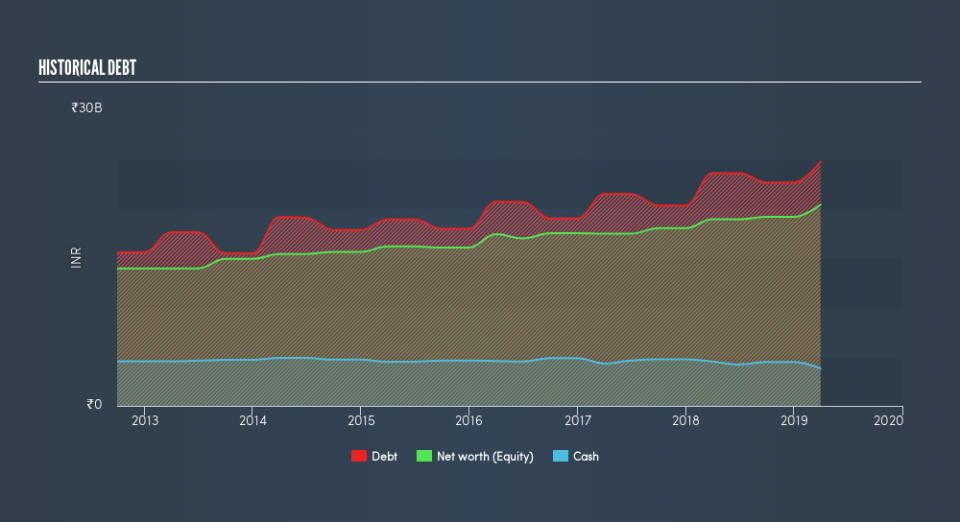What Investors Should Know About Raymond Limited's (NSE:RAYMOND) Financial Strength

Raymond Limited (NSE:RAYMOND) is a small-cap stock with a market capitalization of ₹42b. While investors primarily focus on the growth potential and competitive landscape of the small-cap companies, they end up ignoring a key aspect, which could be the biggest threat to its existence: its financial health. Why is it important? Evaluating financial health as part of your investment thesis is vital, since poor capital management may bring about bankruptcies, which occur at a higher rate for small-caps. Let's work through some financial health checks you may wish to consider if you're interested in this stock. Nevertheless, these checks don't give you a full picture, so I recommend you dig deeper yourself into RAYMOND here.
RAYMOND’s Debt (And Cash Flows)
RAYMOND has sustained its debt level by about ₹25b over the last 12 months including long-term debt. At this constant level of debt, the current cash and short-term investment levels stands at ₹3.8b , ready to be used for running the business. Additionally, RAYMOND has produced ₹2.5b in operating cash flow in the last twelve months, leading to an operating cash to total debt ratio of 10%, indicating that RAYMOND’s current level of operating cash is not high enough to cover debt.
Does RAYMOND’s liquid assets cover its short-term commitments?
Looking at RAYMOND’s ₹41b in current liabilities, the company arguably has a rather low level of current assets relative its obligations, with the current ratio last standing at 0.97x. The current ratio is the number you get when you divide current assets by current liabilities.
Is RAYMOND’s debt level acceptable?
RAYMOND is a highly-leveraged company with debt exceeding equity by over 100%. This is a bit unusual for a small-cap stock, since they generally have a harder time borrowing than large more established companies. We can test if RAYMOND’s debt levels are sustainable by measuring interest payments against earnings of a company. Ideally, earnings before interest and tax (EBIT) should cover net interest by at least three times. For RAYMOND, the ratio of 2.78x suggests that interest is not strongly covered, which means that debtors may be less inclined to loan the company more money, reducing its headroom for growth through debt.
Next Steps:
RAYMOND’s high cash coverage means that, although its debt levels are high, the company is able to utilise its borrowings efficiently in order to generate cash flow. Though its low liquidity raises concerns over whether current asset management practices are properly implemented for the small-cap. I admit this is a fairly basic analysis for RAYMOND's financial health. Other important fundamentals need to be considered alongside. I recommend you continue to research Raymond to get a better picture of the stock by looking at:
Future Outlook: What are well-informed industry analysts predicting for RAYMOND’s future growth? Take a look at our free research report of analyst consensus for RAYMOND’s outlook.
Valuation: What is RAYMOND worth today? Is the stock undervalued, even when its growth outlook is factored into its intrinsic value? The intrinsic value infographic in our free research report helps visualize whether RAYMOND is currently mispriced by the market.
Other High-Performing Stocks: Are there other stocks that provide better prospects with proven track records? Explore our free list of these great stocks here.
We aim to bring you long-term focused research analysis driven by fundamental data. Note that our analysis may not factor in the latest price-sensitive company announcements or qualitative material.
If you spot an error that warrants correction, please contact the editor at editorial-team@simplywallst.com. This article by Simply Wall St is general in nature. It does not constitute a recommendation to buy or sell any stock, and does not take account of your objectives, or your financial situation. Simply Wall St has no position in the stocks mentioned. Thank you for reading.

